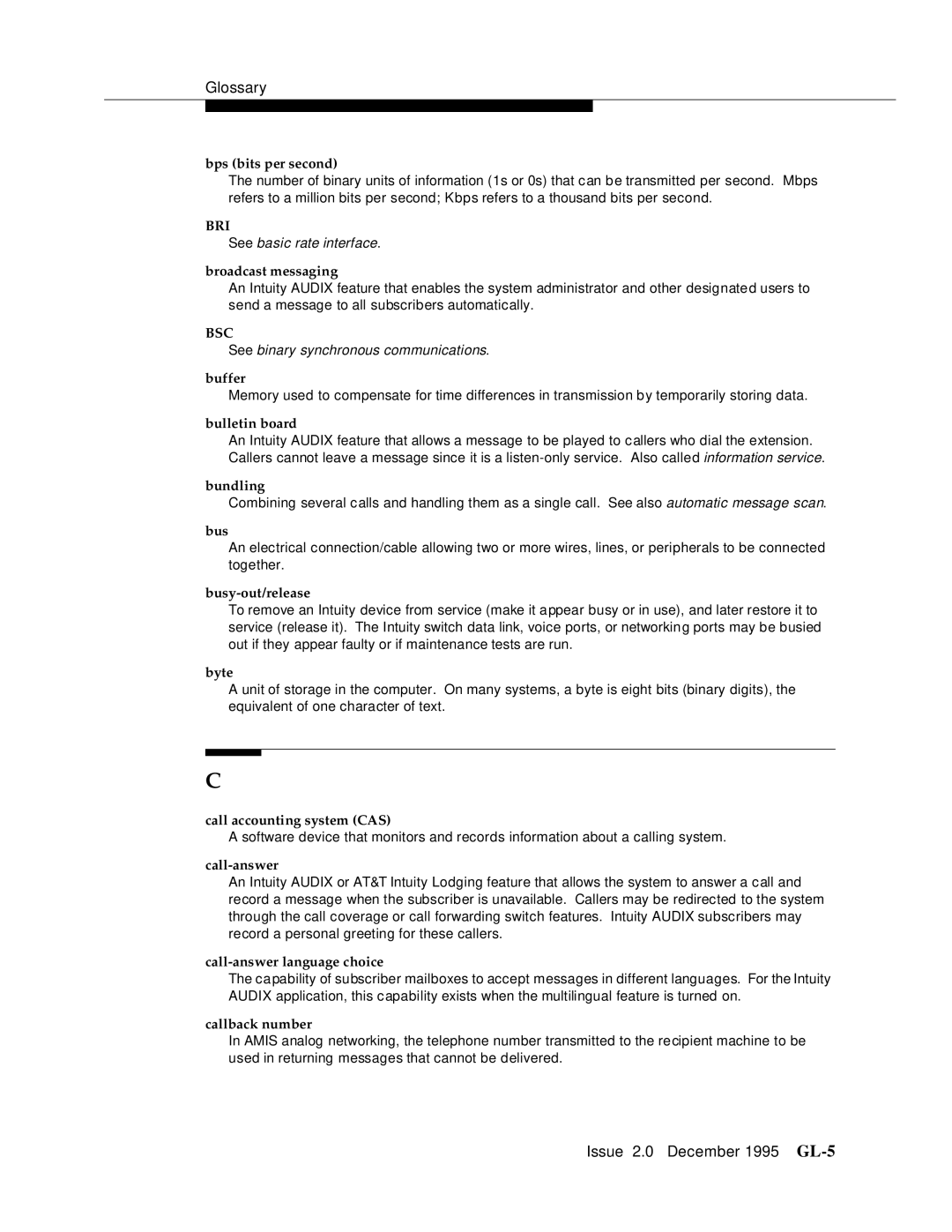
Glossary
bps (bits per second)
The number of binary units of information (1s or 0s) that can be transmitted per second. Mbps refers to a million bits per second; Kbps refers to a thousand bits per second.
BRI
See basic rate interface.
broadcast messaging
An Intuity AUDIX feature that enables the system administrator and other designated users to send a message to all subscribers automatically.
BSC
See binary synchronous communications.
buffer
Memory used to compensate for time differences in transmission by temporarily storing data.
bulletin board
An Intuity AUDIX feature that allows a message to be played to callers who dial the extension. Callers cannot leave a message since it is a
bundling
Combining several calls and handling them as a single call. See also automatic message scan.
bus
An electrical connection/cable allowing two or more wires, lines, or peripherals to be connected together.
busy-out/release
To remove an Intuity device from service (make it appear busy or in use), and later restore it to service (release it). The Intuity switch data link, voice ports, or networking ports may be busied out if they appear faulty or if maintenance tests are run.
byte
A unit of storage in the computer. On many systems, a byte is eight bits (binary digits), the equivalent of one character of text.
C
call accounting system (CAS)
A software device that monitors and records information about a calling system.
call-answer
An Intuity AUDIX or AT&T Intuity Lodging feature that allows the system to answer a call and record a message when the subscriber is unavailable. Callers may be redirected to the system through the call coverage or call forwarding switch features. Intuity AUDIX subscribers may record a personal greeting for these callers.
call-answer language choice
The capability of subscriber mailboxes to accept messages in different languages. For the Intuity AUDIX application, this capability exists when the multilingual feature is turned on.
callback number
In AMIS analog networking, the telephone number transmitted to the recipient machine to be used in returning messages that cannot be delivered.
Issue 2.0 December 1995
